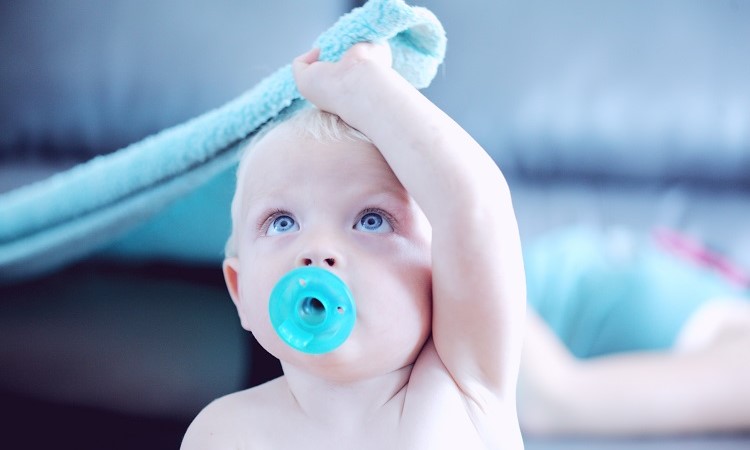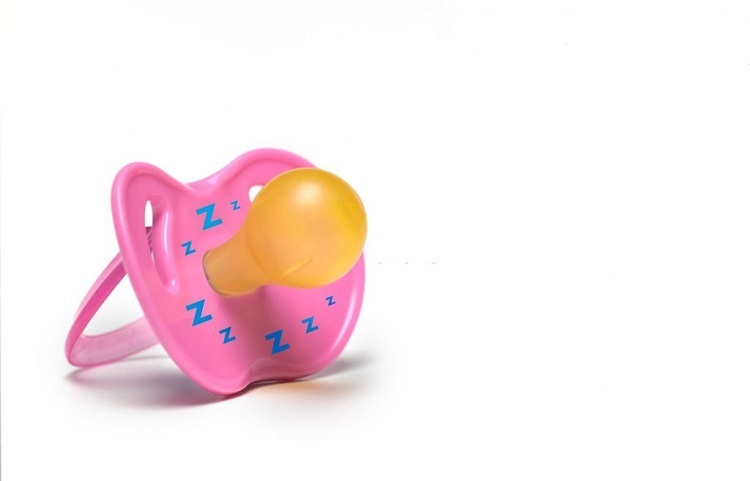Does the yellow color of your baby’s favorite pacifier give you concern? Staring at it you wonder why do pacifiers turn yellow?
Are you concerned that the yellow coloration of the pacifier you use to soothe your baby may put your baby at risk of becoming prone to disease condition?
This article will discuss why pacifiers turn yellow and the best approach to take when cleaning your pacifier.
Pacifiers: Everything You Need To Know
Pacifiers refer to anything that can be given to babies as a substitute for their mother’s nipple, and these substitutes could be of rubber, plastic, or silicone origin.
These substitutes are given to infants to suckle to calm their distress, which may occur between feedings by giving them something to suckle, especially when the cry isn’t a call for feeding or an expression of hunger.
Pacifiers have three parts, an elongated teat, a mouth shield, and a handle. The mouth shield prevents the swallowing of the pacifiers by the child, and it achieves this through its large size.
Why Do Pacifiers Turn Yellow
The normal color of new rubber pacifiers is light yellow or light brown, but as they age, they turn yellow and become sticky even when they are not being used.
It is natural for pacifiers to age, so the aging process can make them turn yellow. It could also be a result of boiling during sterilization in other to prevent the accumulation of germs and disease-causing organisms.
Natural rubber from which some pacifiers are made usually has low thermal tolerance.
As a result of their low thermal tolerance, sunlight, and heat can cause damage, resulting in the yellowing of pacifiers, or you notice that your pacifiers are turning yellow.
When your pacifier’s color starts getting darker or gets larger, it is a sign that you should consider changing it.
Read Also: How To Keep Pacifier in Newborn Mouth
How To Prevent Pacifiers From Turning Yellow During Cleaning
Since pacifiers are made from natural rubber, they have low thermal tolerance. Thus, using vinegar and water when cleaning your pacifier becomes the safest alternative.
Clean pacifiers between each use with a 50/50 mixture of white vinegar and water.
Before handing over the pacifier, squeeze out the salt and vinegar chips, then rinse them with water.
This is a safer alternative to cleaning products or bleach. Otherwise, your baby may develop a lifelong aversion (or obsession?) to salt and vinegar chips.
Remember, When your pacifier’s color starts getting darker or begins to get larger, it is a sign that you should consider changing it.
How Long Should Your Baby Use A Pacifier?
Experts suggest discarding pacifiers or considering replacing them after 4 to 8 weeks of use.
If your baby’s pacifier becomes worn out, even if it is not eight weeks, you need to discard it because once it is worn out, it becomes porous and can break easily, and if this happens, your baby is at risk of swallowing the broken bits.
Also, the older your baby’s pacifiers get, the more their ability to hide bacteria becomes enhanced, so once your baby’s pacifiers clock eight weeks, please discard them for the child’s sake.
Read Also: 10 Best Gifts To Replace Pacifiers
Guide to Choice of Pacifiers

There are many pacifiers and brands of pacifiers made available for use by babies.
As you may know, every baby is unique. Hence, there are many things you need to factor in when choosing pacifiers to get the best pacifier for your baby.
1. Size
The first thing to consider when making choices of pacifiers is the size.
There are many sizes of pacifiers on the market, so ensure that you get your baby’s exact size of the pacifier.
Usually, the breakdown is for 0-6 months, 6 – 18 months, and 18+ months. You should get the one recommended for your baby’s age bracket to prevent any health hazards for maximum effect.
Remember, a choking hazard is likely to occur when you give a smaller pacifier to a bigger baby.
2. Nipple Materials
There are different pacifier materials, so you need to pay close attention to your baby during early usage to find out if your baby is allergic to the pacifier material.
Some pacifiers are made of silicone and latex. Latex is generally softer, but silicone is often recommended because of the risk of latex allergies and also because silicone-made pacifiers can be thrown easily inside a dishwasher.
3. The Shield
Talking about the shield here, I am referring to what stops your baby from sucking the pacifier fully into his or her mouth.
Sucking the pacifier fully into the mouth can cause a choking hazard. When choosing a pacifier for your baby, you should choose one with a big shield to prevent choking hazards.
A good point of reference is that the guard should be 1.5 inches or bigger.
Read Also: 10 Best Baby Pacifiers
Why Use a Pacifier
Some parents advocate for pacifiers because they help the babies in self-soothing and then help the nursing mothers have some breathing space.
Pacifiers work magic with fussy children, an angry, screaming baby can become calm and sweet when given pacifiers.
Pacifiers can also be used to keep your baby calm by your partner or caregiver while the mother undergoes a mental and physical break from the baby.
What To Do Before You Give a Baby Pacifier?
Before giving your baby a pacifier, you must check the pacifier.
The essence of the checking is to be sure that there is no tear on the pacifier.
Every child is unique, and they have different strengths. As a result, some babies tear their pacifiers more easily than others while sucking.
You need to tug at the rubber and ensure no dental marks, cracks, or tears and if you notice any of these, please discard the pacifier. It is no longer safe for your baby’s use.
Read Also: How To Clean Baby Yellow Teeth
Conclusion
Hopefully, your question on why do pacifiers turn yellow has been answered correctly.
Pacifiers give babies peace of mind and enable their relaxation and tranquility, but while these are important, your child’s safety is paramount.
It is worthwhile that you remember that the normal color of new rubber pacifiers is light yellow or light brown, but as they age, they start turning yellow and become sticky even when they are not being used.
It is also natural for pacifiers to age, so the aging process can make them turn yellow. Sometimes, it could be a result of boiling during sterilization to prevent the accumulation of germs and disease-causing organisms.
Natural rubber from which some pacifiers are made usually has low thermal tolerance. As a result of their low thermal tolerance, sunlight, and heat can cause damage, resulting in the yellowing of pacifiers or you noticing that your pacifiers are turning yellow.
When your pacifier’s color starts getting darker or gets larger, it is a sign that you should consider changing it.
